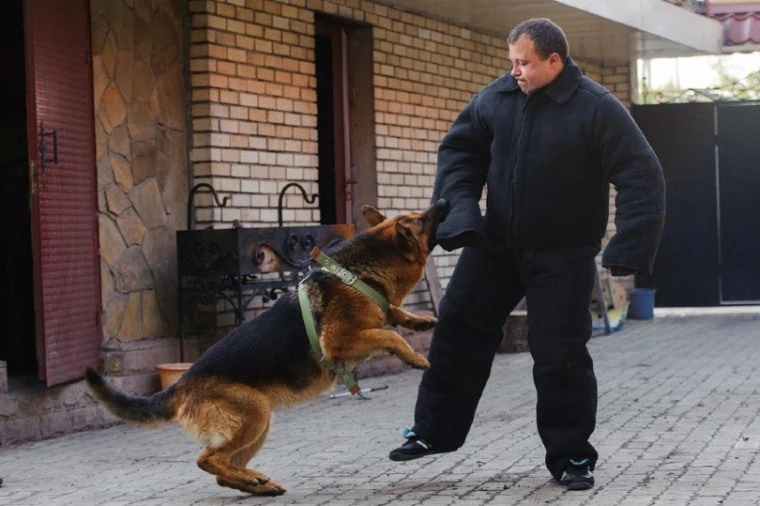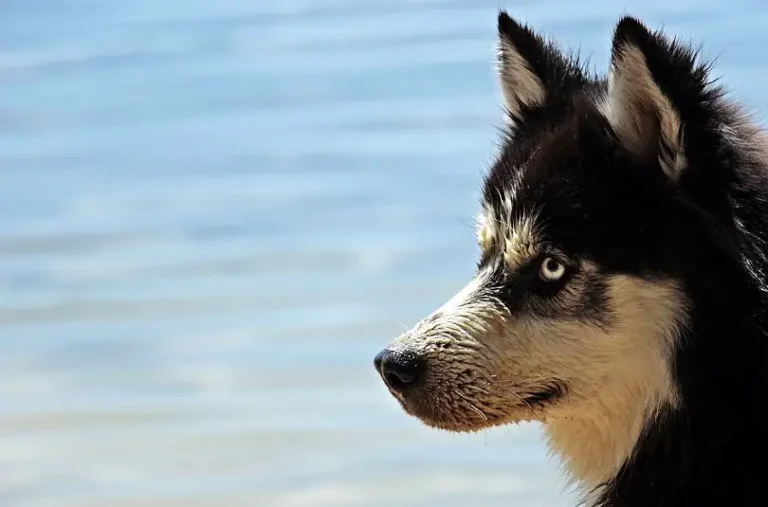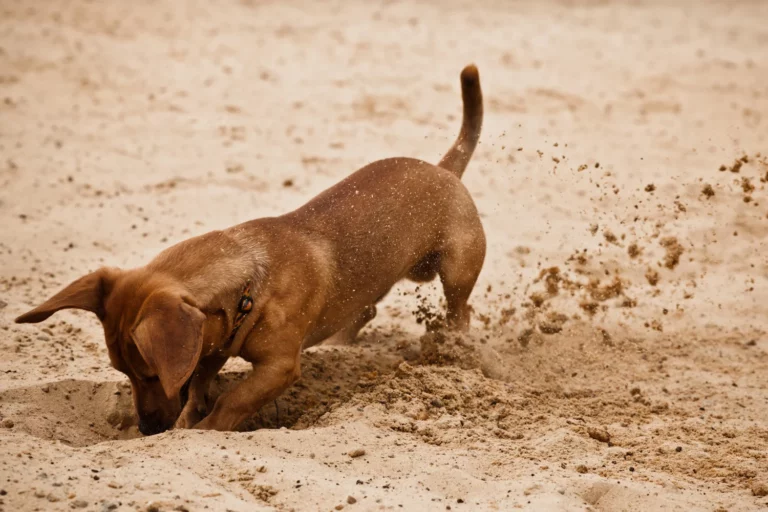American Water Spaniel: Pictures, Info & Care Guide
The American Water Spaniel is an active, intelligent, and friendly dog breed.
While they have an independent and protective nature, they are loyal, devoted family dogs and make great additions to any household—as long as they are given proper care.
Learn more about their personality, health requirements, and training needs in this article.

Overview of the American Water Spaniel Breed
| UTILISATION | Hunting |
| FCI-CLASSIFICATION | Retrievers, Flushing Dogs, Water Dogs. |
| BREED GROUP | Sporting |
| COUNTRY OF ORIGIN | United States of America |
| HEIGHT | 15–18 inches (38–46 cm) |
| WEIGHT | 25–40 lb (11–18 kg) |
| LIFE EXPECTANCY | 10-12 years |
| TEMPERAMENT | Charming, eager, happy |
| INTELLIGENCE | High |
| SHEDDING AMOUNT | Moderate |
| DROOL AMOUNT | Low |
| EXERCISE AMOUNT | Moderate |
| ENERGY LEVEL | Active |
| BARKING LEVEL | Sometime |
| TRAINABILITY | Easy |
| COAT LENGTH/TEXTURE | Wavy and curly |
| COLORS | Shades of brown |
| SUMMARY | Affectionate with families. Very kid-friendly. Very active. Needs lots of exercise. Open to strangers. Potential for weight gain. |
The American Water Spaniel is a breed that originated in the United States, and it can be found in various colors such as liver-colored, brown and blue-gray.
Its lovable disposition, along with its intelligence and enthusiasm make it an ideal family pet.
This loyal breed is eager to please and loves playing fetch and engaging in other activities to stimulate its mind and body.
Additionally, with proper socialization, they get along well with other pets including cats.
Physical Characteristics and Lifespan
The American Water Spaniel, also known as the “singing dog” for its unique vocalizations, has an average lifespan of about 10-12 years. 12-15 years with optimal care.
This medium-sized breed stands 15–18 inches (38–46 cm) tall at the shoulder and weighs 25–40 lb (11–18 kg).
Its coat is wavy and medium in length with a protective outer coat and dense undercoat, providing insulation during colder climates.
It can be found in colors such as brown, chocolate, red or black with white markings that may appear on the chest, neck and paws.
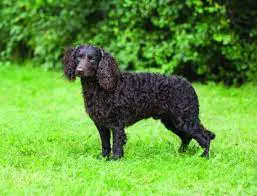
Temperament and Trainability
The American Water Spaniel is very intelligent, loyal, affectionate and eager to please.
Although not an aggressive breed, it can be protective of its family if needed.
This breed is highly trainable and loves activity, such as swimming or playing games.
They may bark at strangers so early socialization is key.
With patience and consistency in training, the American Water Spaniel will become an excellent family companion.
Nutrition and Grooming Requirements for an American Water Spaniel
To ensure your American Water Spaniel is getting the right nutrition, you should feed them a high-quality dog food.
This can be either commercially manufactured or home-prepared with the help of your veterinarian.
Additionally, it’s important to be mindful of how much you’re feeding them since they are prone to becoming overweight.
Treats can aid in training but should not be overused as they can lead to obesity.
Make sure you also provide your four-legged friend with plenty of fresh water at all times!
Maintaining the American Water Spaniel’s coat is important to keep it looking healthy and well-kept.
It should be brushed weekly with either a rubber-tipped pin brush (in summer) or a slicker brush (during shedding season) to remove dead hairs from its double-layer, waterproof coat.
During summer months, the coat is usually sparser and only needs brushing.
Additionally, the dog’s nails should also be regularly trimmed for optimum health.
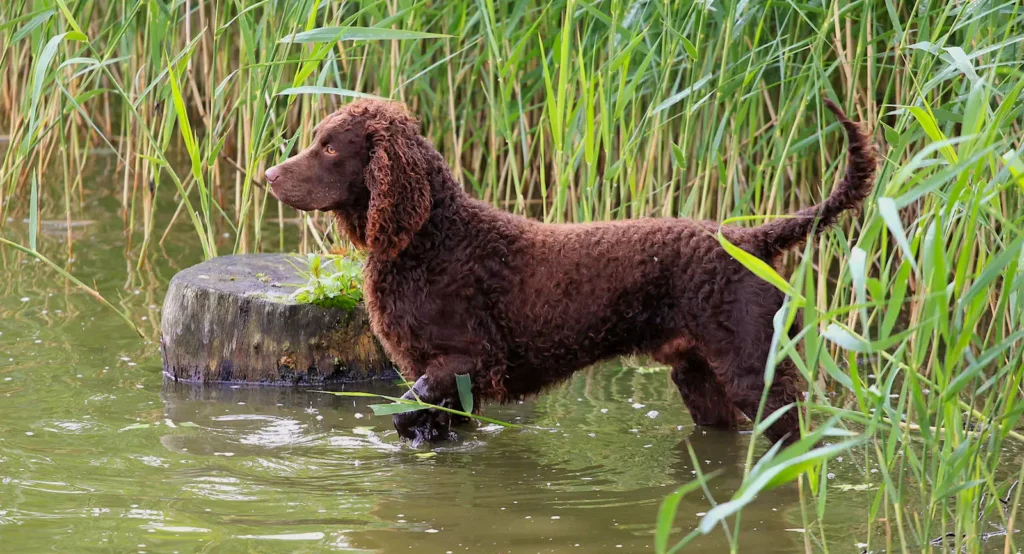
American Water Spaniel Exercise
American Water Spaniels are active and energetic dogs who need frequent exercise.
Without enough physical activity, they can become destructive and barky.
For most Water Spaniels, at least one vigorous play session per day is necessary.
But these smart pups really do best when given a job to do – such as hunting.
Joining field trials, obedience lessons, agility courses or dock diving events are excellent ways to burn off their excess energy in positive ways.
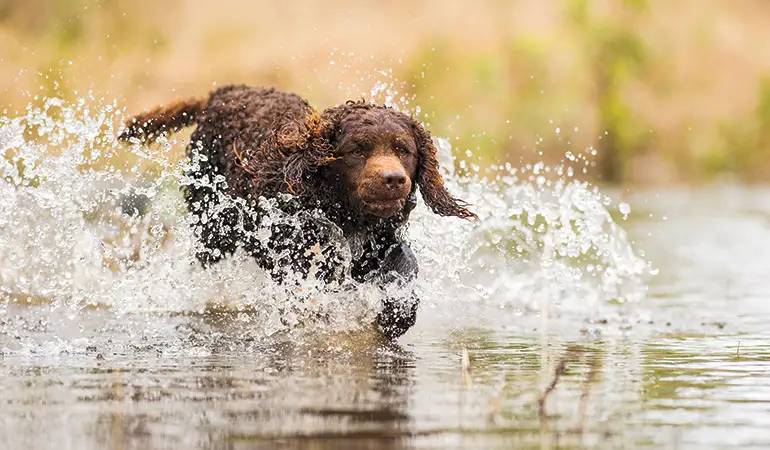
Common Health Issues in American Water Spaniels
The American Water Spaniel is a hardy and generally healthy breed, however, like all purebred dogs, it’s prone to certain diseases.
Examples of common health issues in this breed include bloat, hip and elbow dysplasia, allergies and eye problems.
To help prevent these illnesses from developing, regular vaccinations and vet visits should be considered when looking after an American Water Spaniel.
American Water Spaniel History
Found in the Fox River Valley of Wisconsin, the American Water Spaniel is the official state dog.
This breed was developed by hunters needing a versatile and compact hunter to bring in a wide range of game, both on land and water.
With bloodlines from Curly-coated Retrievers, English and Irish Water Spaniels, Poodles, native Indian Dogs, and either Sussex Spaniels or another type of Field Spaniel; this little brown dog weighed about 40 pounds (18 kg) with a thick curly coat protecting it from harsh winter temperatures.
Due to population drops of ducks in their region and a switch from hunting for food to recreation following World War II, numbers of this breed dropped significantly.
Dr. Fred J. Pfeiffer formed the Wolf River Kennel in order to save the beloved pup; advertising them nationwide with prices up to $25 per male dog.
After recognition by the United Kennel Club (UKC) as “American Water Spaniel” in 1920 and then again by the Field Dog Stud Book in 1938 as well as American Kennel Club (AKC) in 1940, more people began taking interest in the breed again.
As for its link to Boykin Spaniels, there are some theories that Dumpy—an original Boykin found on Spartanburg’s streets—may have been an American Water Spaniel rather than what clubs state it is; yet this is still unconfirmed by further research or documentation.
In 1985 Wisconsin made this pup their official state dog while only 233 puppies were registered with AKC during 1998 due to limited breeding opportunities even though an approximate 3000 estimated dogs live mainly around Midwestern states like Michigan, Minnesota and Wisconsin today.
Despite having a long history, they are still relatively rare with their popularity having decreased since the beginning of the 21st century.
In 2010, the American Water Spaniel was ranked 143rd in terms of popularity among all 167 breeds in the United States.
As the breed does not have a specific classification from the AKC, they may not compete in field trial events.
However, owners can still join the American Water Spaniel Field Association for training opportunities and even become members of the AWSC (American Water Spaniel Club).
A decision was made by club members back in 1999 ruling that the breed shall remain unclassified.
Frequently Asked Questions
What is the difference between an American Water Spaniel and a Boykin spaniel?
The American Water Spaniel is a smaller breed of spaniel, with both male and females averaging around 15–18 inches (38–46 cm) at the shoulders. They have curly coats that come in either chocolate brown or liver red. They require regular grooming and need lots of exercise and outdoor activities.
The Boykin spaniel is a medium-sized breed that stands between 15.5–18 in (39–46 cm) tall. Their coats are usually wavy and can range from solid chestnut to black with white markings. They are highly active inquisitive dogs who need daily exercise and mental stimulation to stay happy and healthy.
How much is a water spaniel?
The adoption fee for an American Water Spaniel varies depending on your location, but typically ranges from $1,200-$1,500.
This fee covers the cost of health evaluations, vaccinations and spay / neuter.
Do water spaniels bark a lot?
The American Water Spaniel is generally not a high barker; however, they may bark if they are startled or excited. In general, they are quite pleasant and obedient companions that will only bark when it is necessary.


